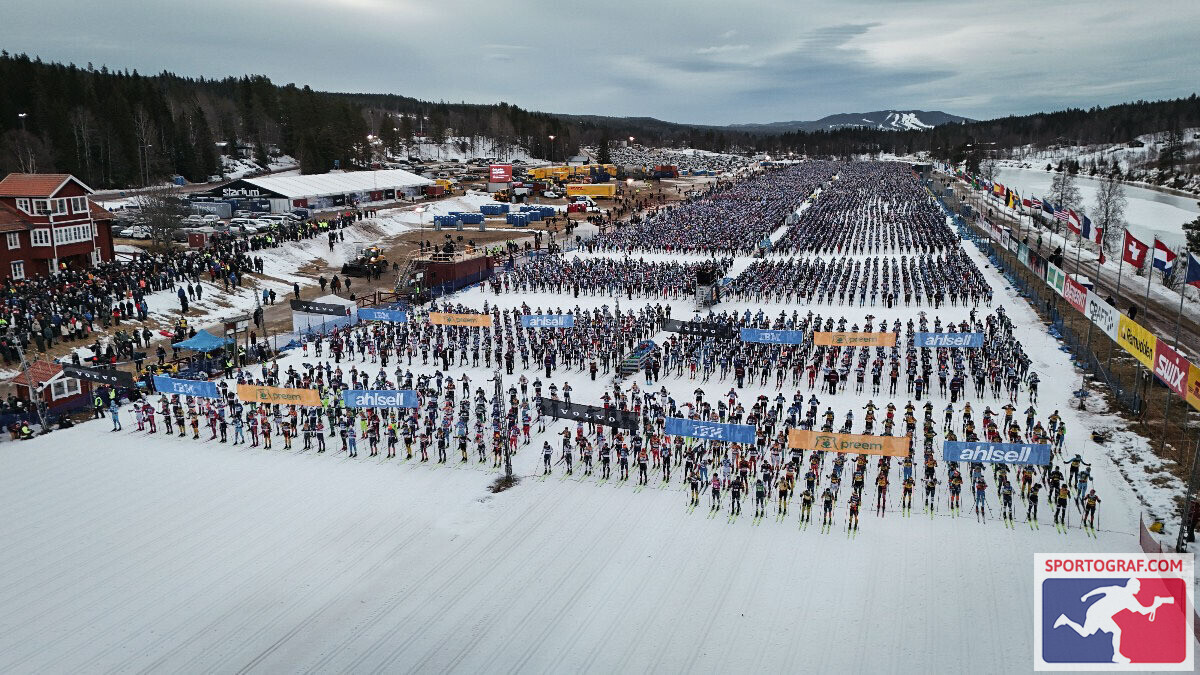Posted by Annika Landis, EnjoyWinter-NTS Factory Team Athlete on Mar 13th 2025
The Vasaloppet and Reflections on Courage
It was on a whim that I signed up for the Vasaloppet this fall. My dad told me that he and my mom were doing a Lumi Experiences trip to Finland, before striking out on their own to head over to Sweden so that my dad could race the Vasa. An opportunity to ski in the largest ski race in the world? Sign me up!
I am in my second year of racing for the Enjoy Winter - Nordic Team Solutions Factory Team and I came into the ‘24/’25 season feeling fit and ready to tackle some big races. A huge part of that confidence was the new partnership with Nordic Team Solutions, which brought Andy Newell into the mix in a coaching role to collaborate with Simon and I on training over the summer. Skiers are made in the summer, and towards the fall I began adding in a lot more upper body strength and double poling. Up until about October, I had modified my strength significantly to better support my running goals, and could feel during roller ski workouts that I needed to build back some functional muscle. All of the months between October and March, I knew that I was racing the 90-kilometer Vasaloppet, and yet, big races can feel so abstract until the moment that they are right around the corner. And, then just like that they are a week away and feel suddenly real. On the Sunday evening after the American Birkebeiner, still riding the high of a good result and the incredible energy of the weekend, I jumped on a plane to Stockholm.
With any high, comes a low, and what goes up must come down. Or rather, what goes down, must come up. Courtesy of MSP, I spent 15 hours, (90% of which was on a plane, in the airport, or in a car) unable to last more than 30 minutes without being sick. It was certainly not how I planned to start my trip to Sweden, and it wasn’t until Friday that I was able to eat anything besides rice and broth, and ski for more than 45 minutes. Needless to say, I did not feel well prepared physically to race 90 kilometers, and mentally I questioned the situation I had put myself in. Regardless of my perceived readiness, my alarm still rang at 3:00 am and my dad and I were off to catch the bus from Mora to the start line in Sålen. The race begins at 8:00 am, but every wave starts together. Factoring in the bus ride, waiting in line to set skis down in the start pen, and using the bathroom (the longest line of all), it was worth it to be there early.
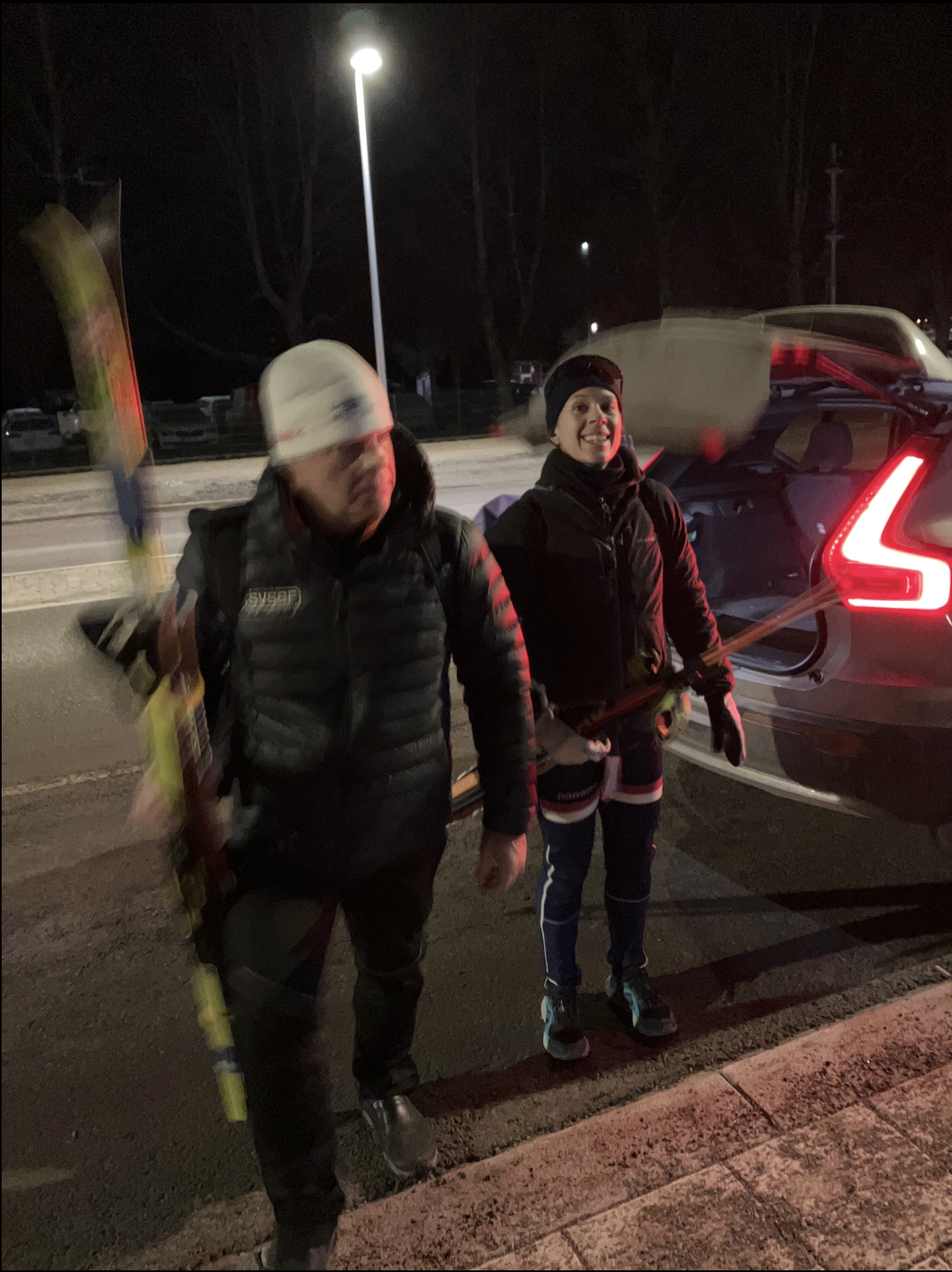
Two different 4 am attitudes
I wasn’t able to get an elite start, so I started in wave 2, with about 2,000 people in front of me. It is hard to articulate what it feels like to be at the start line of the Vasaloppet and it is an experience that I am still processing. My dad mentioned afterwards that it felt a bit like being an infantry soldier in a Roman army, hoping the living mass around you doesn’t become deadly. The start was unlike anything I have ever seen. A few minutes before the gun went off I looked behind me and felt a sudden and overwhelming fear that I would be enveloped and trampled by the enormous mass of people that swelled into the distance. I barely had time to register that thought when the gun went off and 16,000 bodies surged forward in unison. It felt like being part of a living organism with thousands of individual beings existing simultaneously as a collective. The scene from above belonged in a National Geographic documentary, so closely did it resemble a 20,000-strong herd of migratory caribou rippling over the tundra, an amorphous but organized school of fish undulating on the tides, or a murmurations of tiny birds that block out the sun.
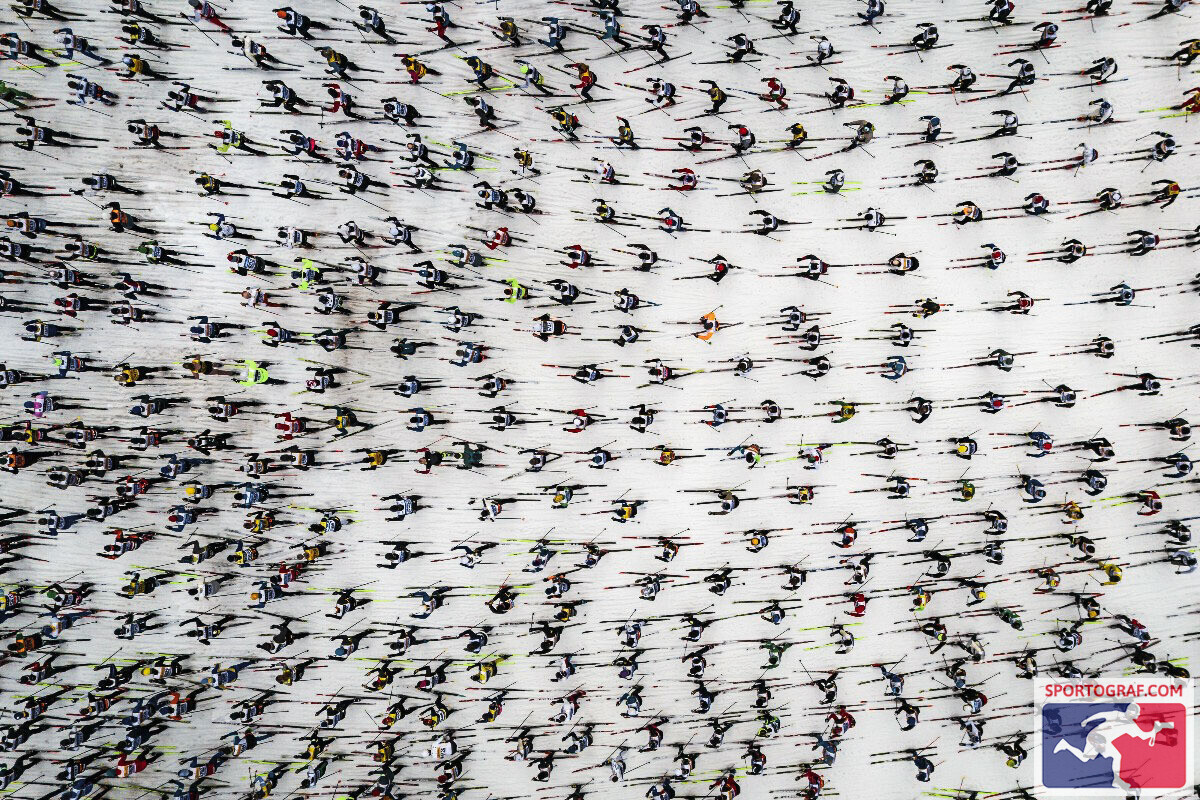

What could have been chaos was oddly civilized, as each skier moved forward with cautious purpose towards the first and largest hill. The iconic scenes of the Vasa are usually from this first hill, where skiers come almost to a dead stop, defending a small bubble of space as they power forward up the steep pitch, one inch at a time. There is nowhere to go but forward.
Once you summit the first climb, the group spreads out considerably, or at least it did in wave two, and the real skiing begins. This year, the course was in tough shape, with a thin icy base, with dirty sugar snow on top. The tracks were almost non-existent and as the day heated up (it was almost 45ºF by the end) the sugar turned to sticky slush. The organizers achieved a herculean task preparing the course, including putting wooden pallets under the snow to span the melting marshes. For the first 20 kilometers or so, there was a 6 inch wide trench every 20 feet along the course to drain water, marked every time by fragments of a broken pole. But again, the only way was forward.

I really struggled in the first half of the race. I couldn’t find the courage leading up to the race to commit to double poling; I felt I hadn’t trained enough (which I hadn’t) and that my double pole muscles were too weak to withstand 90k. My stomach was also still recovering and repeated crunching had not felt very good in the days before. I also was just nervous generally because I didn’t know what to expect. So I opted to put a bit of wax on my skis, and almost instantly regretted it as skiers with skate skis tucked gradual downhills while I frantically double poled to keep up. Because I am stubborn, and the thought of stopping during a race was so foreign to me, I waited far too long to take action. I needed to change the direction of my race, and I kept thinking of a quote from the Ski de She camp I attended earlier this season. The keynote speaker for the weekend Carrie Tollefsen, an olympic runner, spoke about not letting anyone decide your outcome. I may have put myself in this situation, so it was up to me to get myself out of it.
I ended up stopping at a wax service station, where a team of apron clad techs eagerly obliged my frantic requests to ‘please take it all off.” They were even so kind as to clean my glide zones. I felt like a race car at a pit stop, and in just a few minutes with a gel on board and new skis, I was on my way again. It was a completely different race. After that I felt like I was flying and my mindset completely switched from ‘I’ve just gotta make it’ to ‘I’m going to bury myself.’ It felt sinfully good to pass so many of the people who had flown by me 20 kilometers before, and even though my arms, neck and back were burning, I felt good. The Vasaloppet is mostly flat or downhill, but as the race goes on, each gradual hill feels like a small mountain, and little by little the cracks start to show as skiers become more hunched over their poles. Seeing the spire of the church in Mora, and skiing the final kilometers through town is nothing short of euphoric.
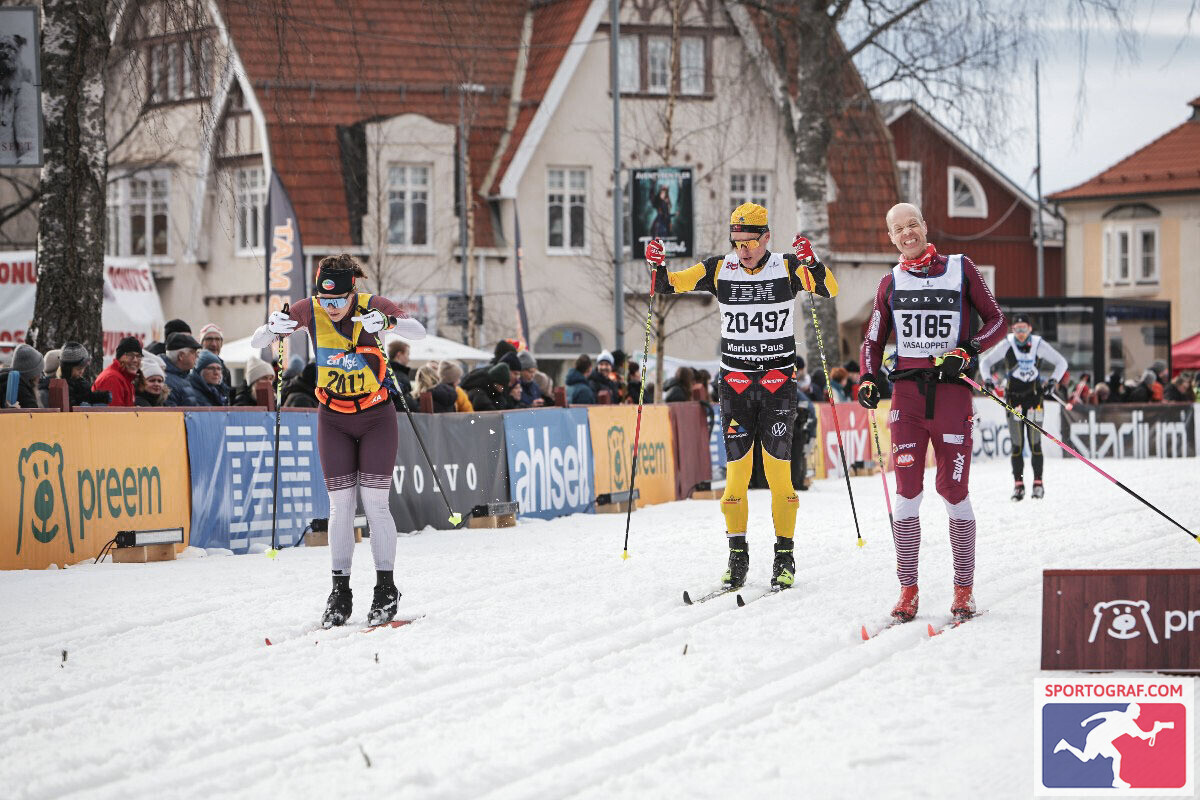
The feeling I had at the finish was strange. I had accomplished something big, but at the same time I had never doubted that I could, so I didn’t know whether to feel proud or disappointed. I think sometimes there can be a disconnect between knowing we can achieve something hard, do it well, and perhaps even do it at a really high level, and allowing ourselves to still feel like it was a big accomplishment. I have skied 100+ kilometers many times, and there was no doubt in my mind that I could ski a 90k race. At the same time, double poling 90 km during a race adds a layer of physical and mental challenge. I had a black and white vision of how the race could go. Good or bad. If I didn't think I could double pole at the level of the elite women, the only other scenario was a complete muscular system failure. In my mind, I was preemptively embarrassed to struggle, and for people to see it. I wanted to either be competitive or not do it at all, because being somewhere in the middle felt uncomfortably uncategorizable.
This is a mindset that I am actively targeting to dismantle because it sets up each endeavor as a full success, or complete failure, and it stops me from taking risks. It made me hesitate and question my abilities, and in the end I was more embarrassed by my lack of confidence that so many other people seemed to possess, than I ever would have been in physically struggling. I saw people out on course, who, for all logical reasoning, had no business double poling 90k. And, yet, there they were, head down, determined and braver than me!
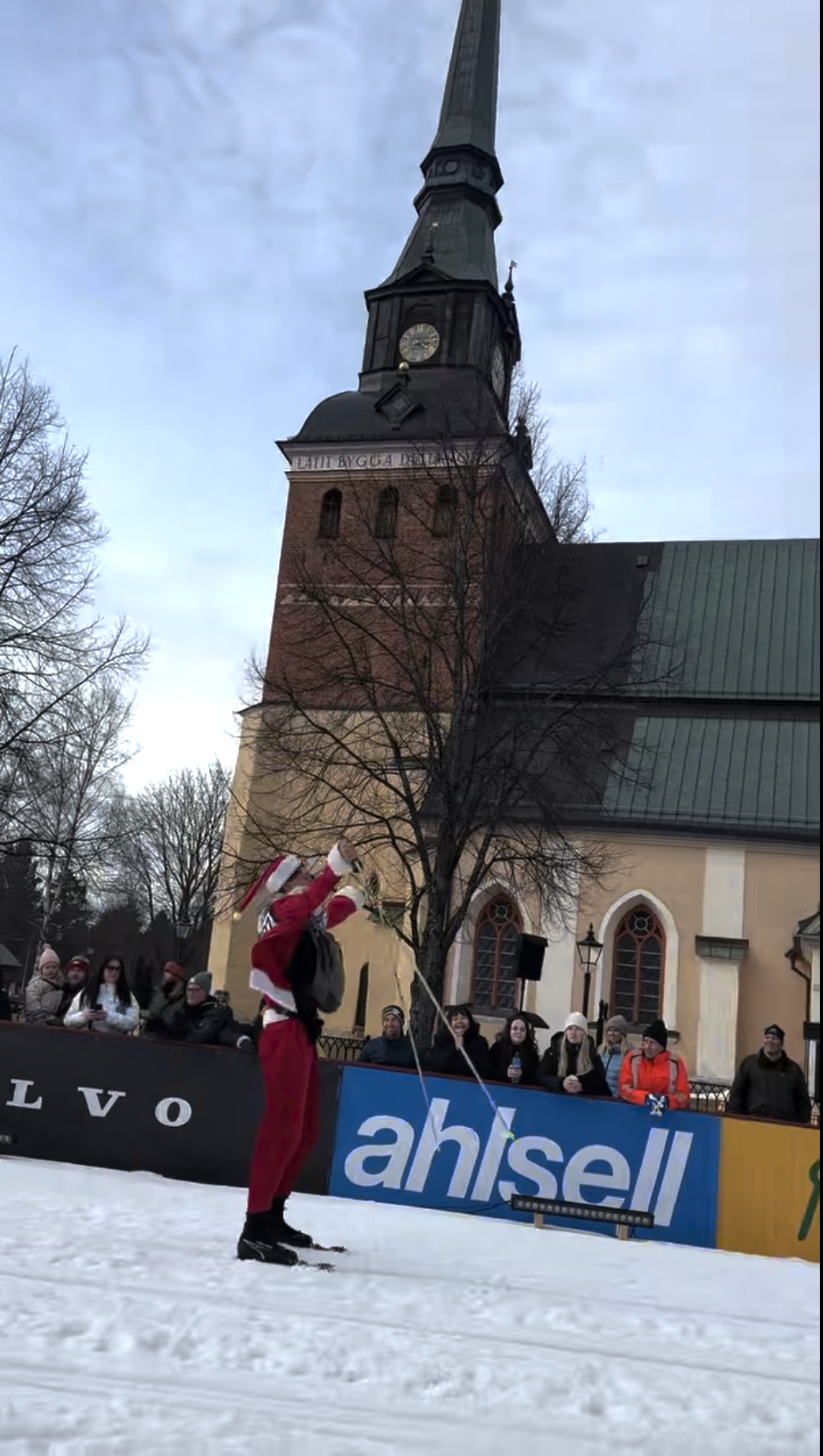
If Santa can double pole 90km with a front backpack, so can you!
My overpowering thought from the weekend was complete awe that 16,000 people would choose to go ski 90 kilometers for fun, and that many of them would take all day to do it. The athletes I admire the most in races are those in the back half, the ones who never expect to win, but instead have some other ambition and drive that inspires them to spend 11 hours in tough conditions and complete the race in the dark. That to me is far more inspiring than watching an elite athlete whose only job is to be good at skiing, be good at skiing. Or at least it is impressive in an altogether different way. I only hope I can find the same grit that those people have, and the same bravery to apply it to something out of my comfort zone.
Racing the Vasaloppet, the Birkie, Ski to the Sun, BMT, and so many more marathons that mix together all levels of athletes has been invigorating. Stepping back from the elite ‘bubble’ and re-immersing myself back into the core of the Nordic skiing community has inspired me to take more risks, to be braver in my goals, and to be more generous and expansive in my definitions of success. It is one thing to race for something ‘concrete’ like a world cup start, an Olympic team, or prize money. It is tangible and measurable to yourself and to others. It is another thing to race for just yourself, for the sake of it, for personal goals and ambitions that perhaps only mean something to you and the people closest to you. It can be harder to quantify what success looks like in that space, but that is almost the beauty of it. Each person gets to decide what their success is.

Racing marathons and being an ambassador for the EW-NTS Factory Team, is incredibly grounding, and I am so grateful for all of the lessons, memories, and inspirations I’ve collected from the thousands of participants and supporters I’ve met along the way. So many people without ever knowing, have made me a better skier, competitor and person, just by being tough, ambitious, and gritty, by being generous, kind, and thoughtful, by dreaming big and being out there until the bitter end and smiling through to the finish line.
You may not be winning, but you are always in a position to inspire. So thank you for inspiring me! 